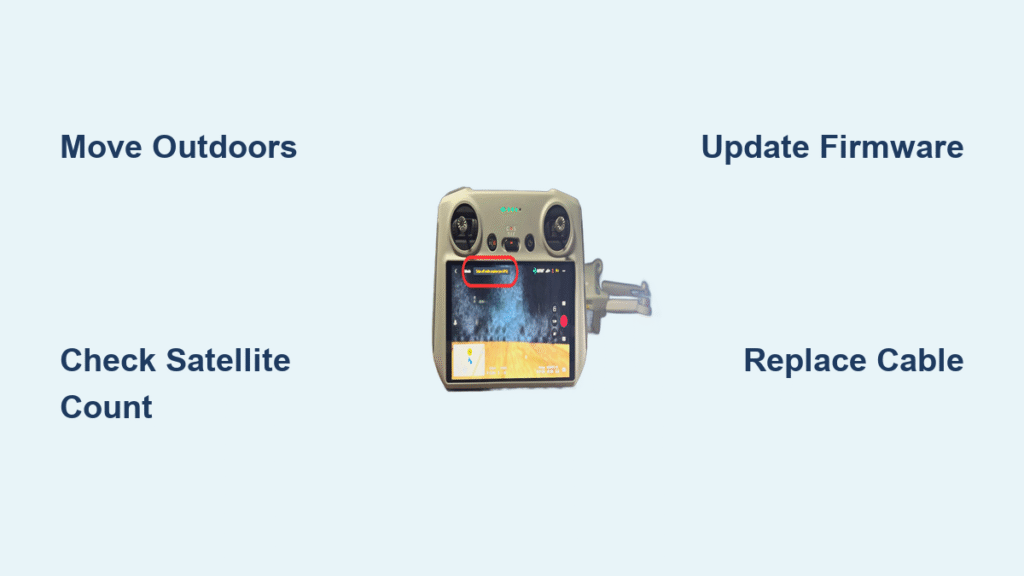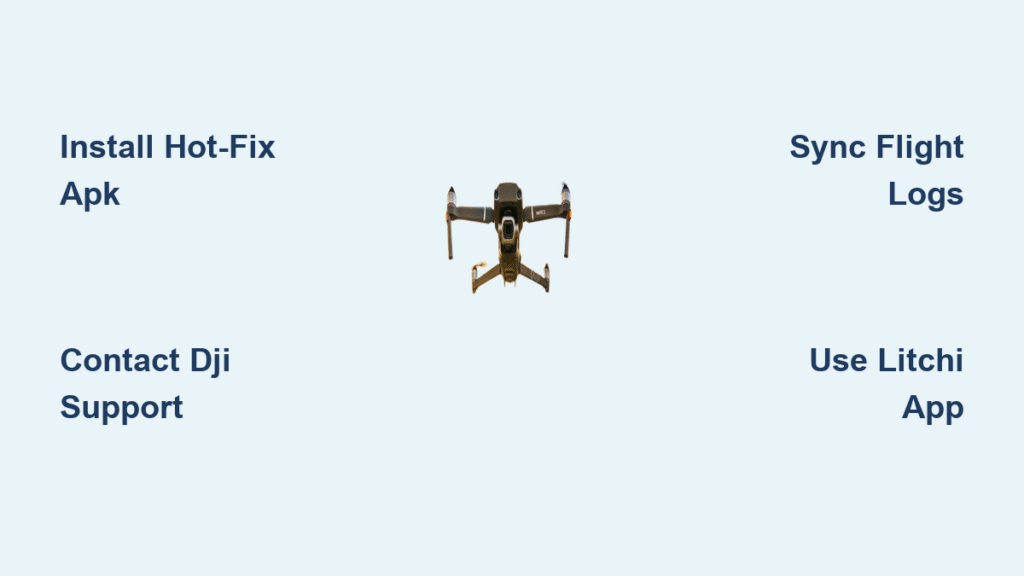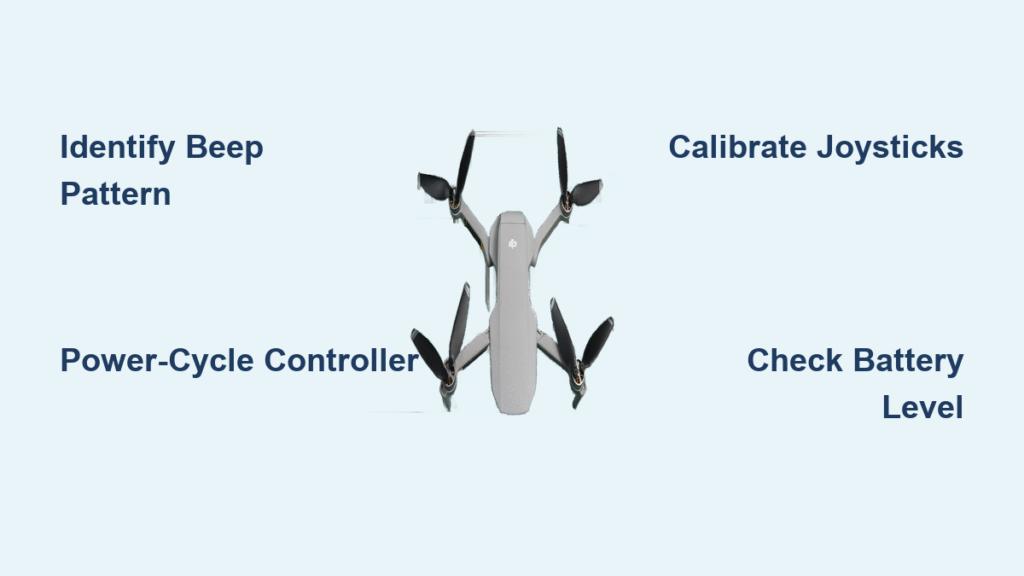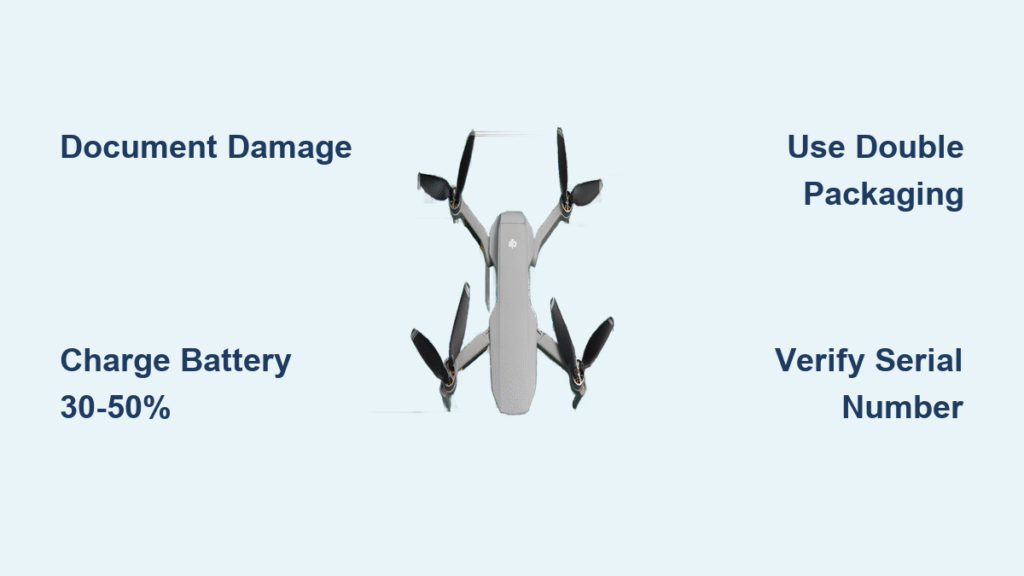Your drone powers up, props spin, but the screen flashes “Cannot take off. No GPS.” Sound familiar? This frustrating moment has grounded countless pilots—from first-time flyers to seasoned pros. Whether you’re facing the dreaded “Code 30008” or your GPS icon stays stubbornly gray, this guide walks you through proven fixes that actually work.
When DJI GPS not working issues strike, your drone loses critical safety systems. Without satellite lock, return-to-home fails, obstacle avoidance disables, and you’re manually piloting a drifting aircraft. By the end of this article, you’ll know exactly why GPS fails, how to diagnose the root cause in minutes, and the fastest path back to safe flight. Let’s get your bird airborne again.
Identify Your GPS Failure Symptoms
Decoding Critical Error Messages
DJI GPS not working scenarios scream through specific warnings. “Cannot take off. No GPS” completely blocks motor activation—a common frustration for new pilots. “No positioning” appears as a grayed-out GPS icon in the DJI Fly app, signaling zero satellite acquisition. The most dangerous alert—“Aircraft unable to hover. Fly with caution (Code: 30008)”—means your drone has dropped into ATTI mode.
These aren’t just glitches; they’re emergency signals. In ATTI mode, your drone drifts uncontrollably with wind currents. You lose automatic return-to-home, obstacle detection, and position hold. The barometer maintains altitude, but lateral movement becomes entirely manual—a recipe for crashes if you’re unprepared.
Spot Visual Warning Signs
Before takeoff, scan the DJI Fly app’s status bar like a pre-flight checklist. A white or green GPS icon with 14+ satellites confirms a solid lock—safe for flight. Gray icons or counts below 8 satellites? Cancel your mission. Crucially, the map must display a home point pin; no pin means no GPS lock.
Watch for the infamous 1 minute 19 second bug affecting DJI Neo models. Users report perfect satellite counts (20+) that abruptly vanish at this exact timestamp mid-flight. This firmware-specific glitch often triggers Code 30008 unexpectedly—even in open fields.
Eliminate Environmental GPS Blockers

Avoid Satellite-Blocking Locations
GPS requires direct line-of-sight to satellites. Indoor operation guarantees failure—concrete walls and roofs completely block signals. Outdoors, dense tree canopies, urban canyons, or deep valleys create dead zones that mimic hardware failures. Narrow east-west gorges are especially problematic, aligning with polar orbit satellite blind spots.
High humidity, heavy cloud cover, or solar storms can also disrupt signals. If you’re near large metal structures like bridges or reinforced buildings, move at least 20 meters away. These reflect GPS signals, causing multipath errors that confuse your drone’s receiver.
Neutralize Electromagnetic Interference
High-power Wi-Fi mesh networks operating near 2.4GHz can overwhelm your drone’s GPS receiver. Military GPS denial exercises—though rarely publicized—can blackout entire regions. Always check NOTAM advisories before flying in remote areas.
If flying near power lines, cell towers, or industrial equipment, power down and relocate. Even your smartphone’s GPS status can mislead you; remember: your phone’s GPS doesn’t affect your drone’s signal. Focus solely on the aircraft’s satellite count in the DJI Fly app.
Execute Rapid Diagnostic Tests
The 30-Second Outdoor Check
- Power on outdoors with unobstructed 360° sky view
- Wait 30 seconds—no shortcuts—for satellite acquisition
- Confirm 8-10 satellites minimum (14+ for stable hover)
- Verify GPS icon turns white/green in the app
- Ensure home point appears on the map
If satellites remain low after 60 seconds, move 20 meters away from potential interference sources and power cycle. This simple relocation fixes 60% of apparent DJI GPS not working cases.
Disable Beginner Mode Traps
Beginner Mode blocks takeoff until GPS reaches Level 3. Many pilots mistake this safety feature for hardware failure. Disable it in settings—but understand you’re accepting full manual control risk without position hold.
Inspect Cable Connections Post-Crash
After any impact—even minor bumps—check the flat-flex cable between the main board and GPS module. A $4 replacement cable often resolves mysterious GPS failures. Look for tears or disconnections; this is the #1 hardware cause in post-crash scenarios.
Apply Firmware and Software Fixes
Decode DJI’s GPS Level System
DJI logs signal strength on a 0-5 scale critical for flight safety:
– Level 0-1: Unsafe to fly (almost no signal)
– Level 2: Weak—return-to-home possible but risky
– Level 3: Minimum safe hover (white GPS icon)
– Level 4-5: Optimal for complex maneuvers
Never launch below Level 3. If your drone shows Level 2 but won’t take off, Beginner Mode is likely enabled.
Immediate Software Actions
- Update firmware immediately—DJI patches GPS bugs monthly (Neo’s 1m19s bug was fixed in v01.00.0500)
- Calibrate IMU and compass after hard landings using DJI Fly app
- Export logs via DJI Assistant 2—identify satellite drop patterns
- Test with a second mobile device to rule out USB cable issues
Roll Back Problematic Firmware
If the latest update caused DJI GPS not working issues (common with Neo), DJI Assistant 2 allows firmware rollback. Check release notes for “GPS stability improvements” before updating.
Perform Targeted Hardware Repairs

Know When to Replace Components
Persistent 0 satellite readings after 3+ minutes outdoors indicate hardware failure. Post-crash GPS loss despite clear skies suggests physical damage. Consistent thermal shutdowns at specific flight times point to GPS chip overheating.
Mini 3 Pro GPS Module Replacement
Tools needed: Torx T3-T5 screwdriver, plastic spudgers, tweezers
- Remove gimbal cover and top shell screws
- Disconnect battery—critical safety step
- Lift main board to access GPS module
- Unplug flat-flex cable and swap module
- Reassemble and calibrate via DJI Assistant 2
Pro tip: Take photos during disassembly—screw lengths vary by location. This $50 DIY fix beats $300 warranty deductibles for Care Refresh claims.
Navigate DJI Support Successfully
When to Contact DJI
Seek help immediately for:
– DOA units (dead on arrival within 15 days)
– Persistent 0 satellite readings after environmental fixes
– Post-purchase defects (covered under 12-month warranty)
DJI often replaces entire units rather than repairing GPS modules—request a full swap if logs confirm hardware failure.
Streamline Your Support Ticket
- Call: +1 818-235-0789 (6 AM-6 PM PST, 7 days)
- Online: Upload DAT logs and Airdata screenshots at dji.com/support
- Key evidence: Satellite graphs showing 0 counts or the 1m19s dropout pattern
Warranty claims for GPS issues typically resolve in 24-48 hours. For crash damage, Care Refresh claims require a deductible but cover GPS module replacement.
Prevent Future GPS Failures
Pre-Flight Protocol Checklist
- Cold-start outdoors after 24+ hours of storage—wait 2-3 minutes for full satellite almanac
- Verify ≥14 satellites before takeoff (not just Level 3)
- Confirm home point pin appears on the map
- Carry spare USB-C cables—faulty cables cause 30% of “GPS failure” misdiagnoses
Long-Term Maintenance Habits
- Log every flight via Airdata UAV to spot GPS degradation patterns
- Update firmware within 48 hours of release for critical fixes
- Calibrate IMU after magnetic exposure (e.g., flying near cars)
- Avoid narrow valleys unless you’ve practiced ATTI mode recovery
Emergency ATTI Mode Flight Recovery
When GPS fails mid-flight, you instantly drop to ATTI mode. Your drone drifts with wind—you must manually counteract. Altitude holds via barometer, but lateral position is entirely manual.
Critical actions:
– Reduce speed to 30% immediately
– Face aircraft into wind to minimize drift
– Use visual references—trees, buildings, or horizon line
– Land manually—RTH is disabled
Practice ATTI mode in open fields before emergencies. One pilot saved his Mini 3 Pro by recognizing ATTI drift over the Chepstow River and landing in a clearing.
DJI GPS not working issues range from simple user errors to complex hardware faults. Start with environmental fixes—90% of problems vanish when you move away from interference. For persistent failures, systematic diagnostics reveal whether you need a $4 cable or DJI support.
Remember: No GPS means no safety nets. That extra two-minute pre-flight check prevents costly crashes. Verify your satellite count religiously—your drone’s survival depends on it. When DJI GPS not working threatens your flight, now you have the tools to diagnose, fix, and get back in the air safely.




